The Paph. callosum Complex – a historical review
Larger imports of Paph. callosum have been regular imported to Europe in the last millennium. It was therefore relatively common to buy these plants from the relevant orchid dealers.
At this time, alongside Paph. callosum also Paph. sublaeve and Paph. thailandense described and also imported. Some taxonomists have not recognized the latter species as separate species, merely listing them as varieties or synonyms. The Paph. barbatum also belongs in the Paph. callosum complex. Although the Paph. lawrenceanum from Borneo not necessarily to the Paph. callosum complex, I still photographed it with the other plants.
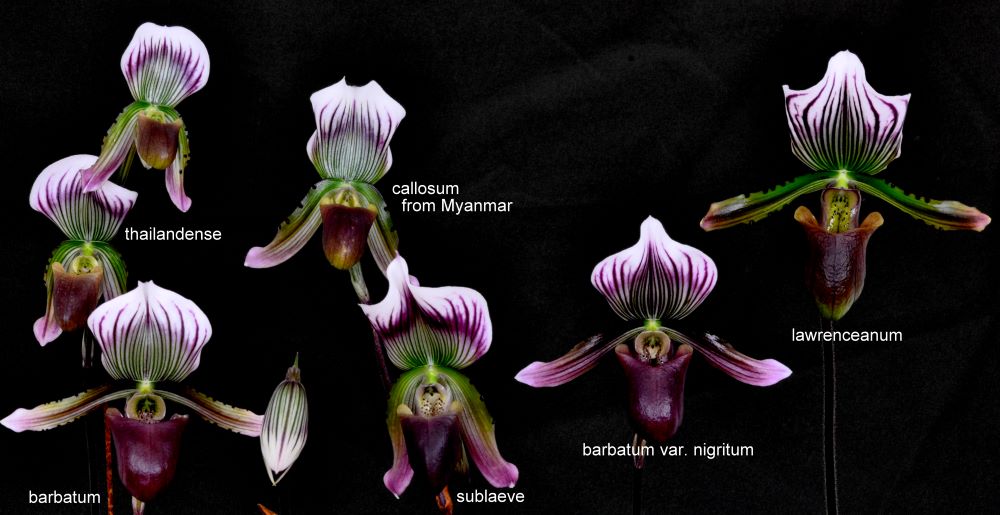
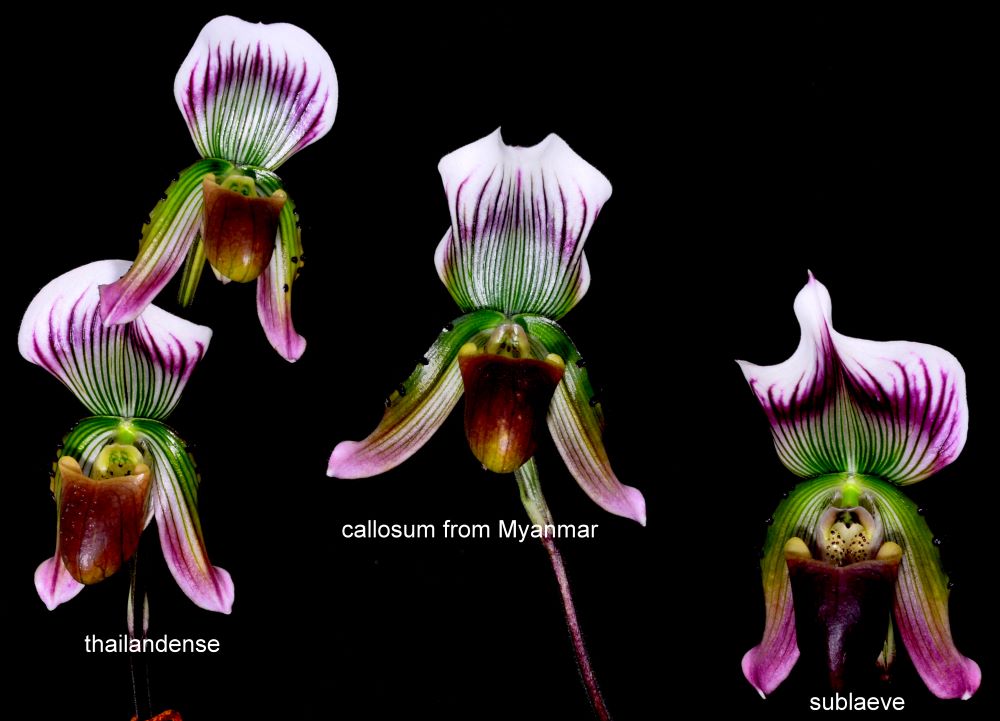
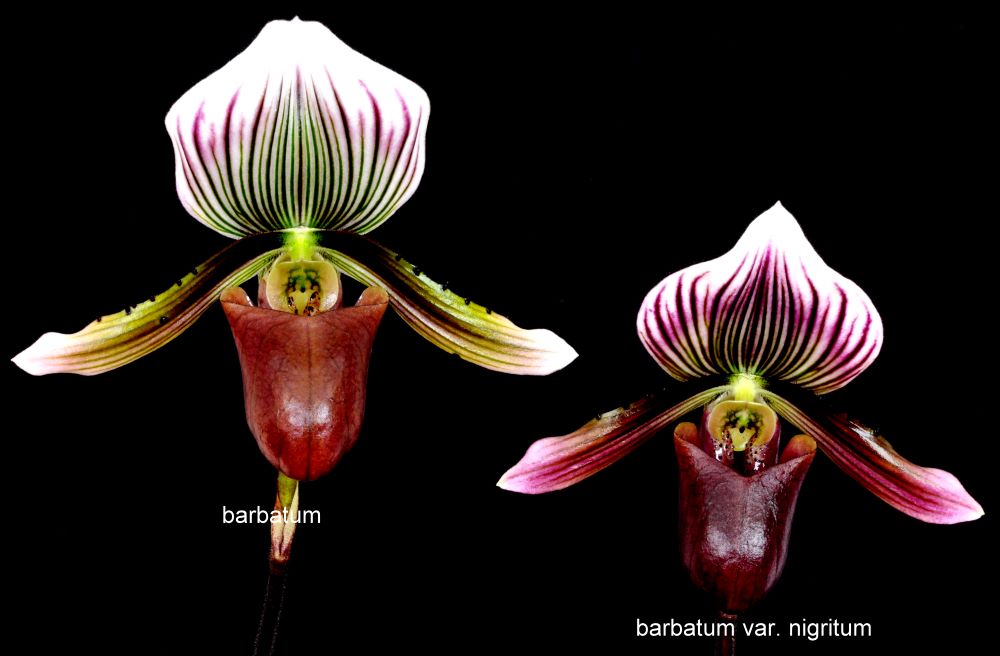
In the American journal Orchid Digest Issue 4 1979, Dr. FOWLIE linked the individual species of the Paph. callosum complex to the localities of these individual species.
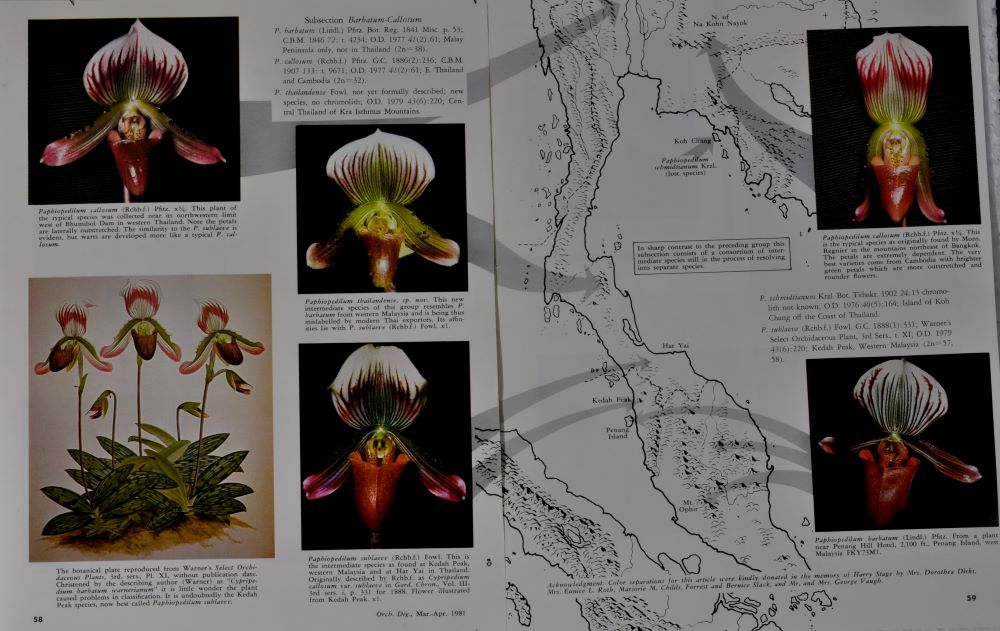
After the border openings in Vietnam and neighboring countries, various Paph. callosum variants found and again in the Orchid Digest issue 3 2007 by L.V. AVERYANUM shown in pictures. Paph. callosum also has sites in Myanmar and Laos.
For us orchid lovers, it is rather difficult to allocate the individual plants, since in most cases we do not know the origin of the plants. In addition, individual clones or varieties have been crossed with each other again and again in order to improve the flower shape and coloration.
I'll show you a few pictures from the Paph. callosum complex of the last few years - I have always been able to assign the names with the expert help of Boscha Popow, Wolfburg (Germany).
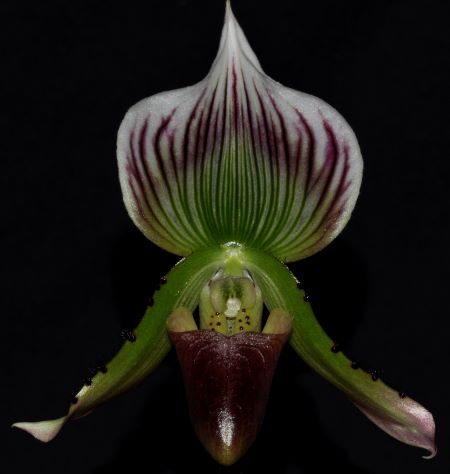
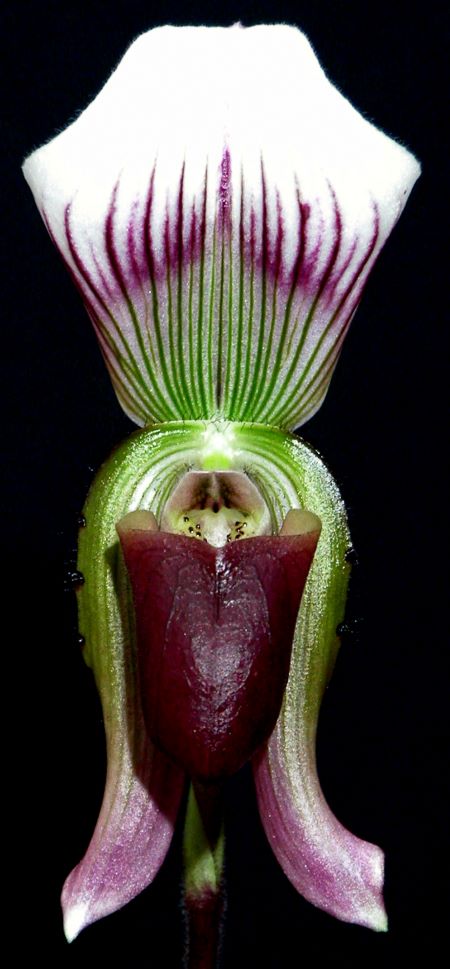
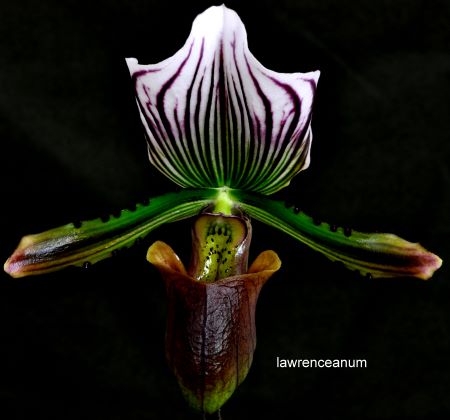
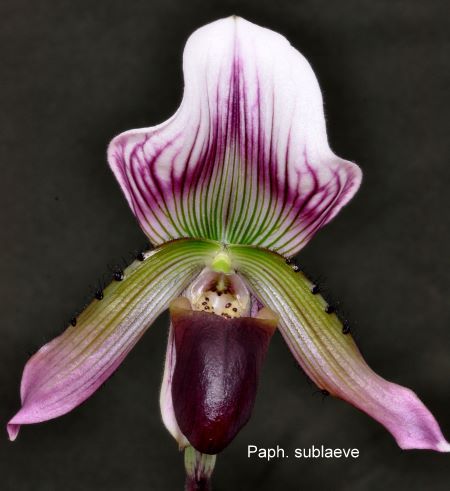
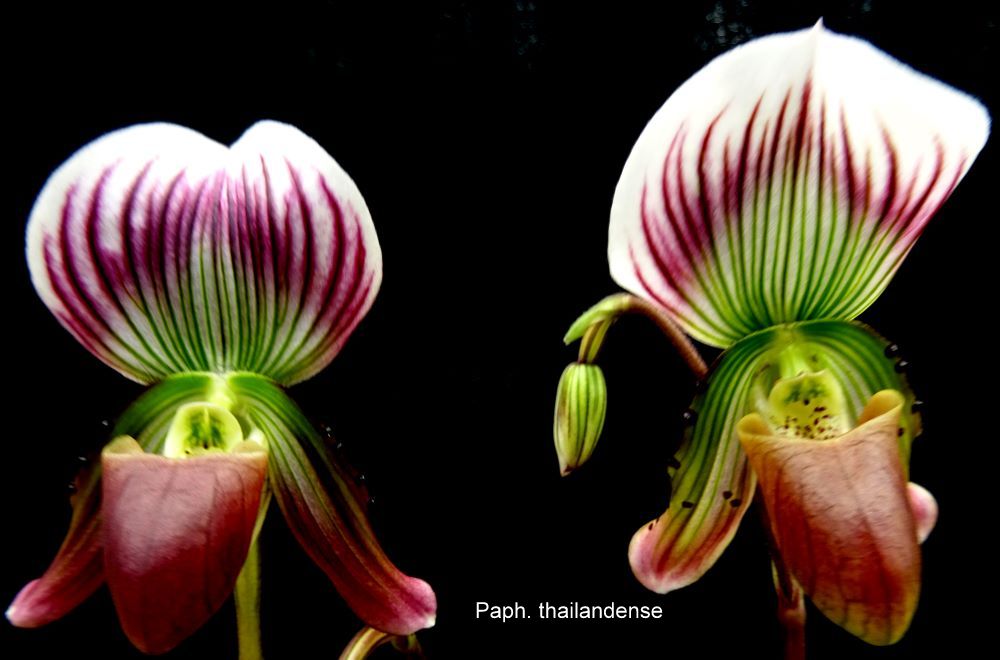
Here are a few plants I photographed from this complex in 2015/2016 - I lost the names.
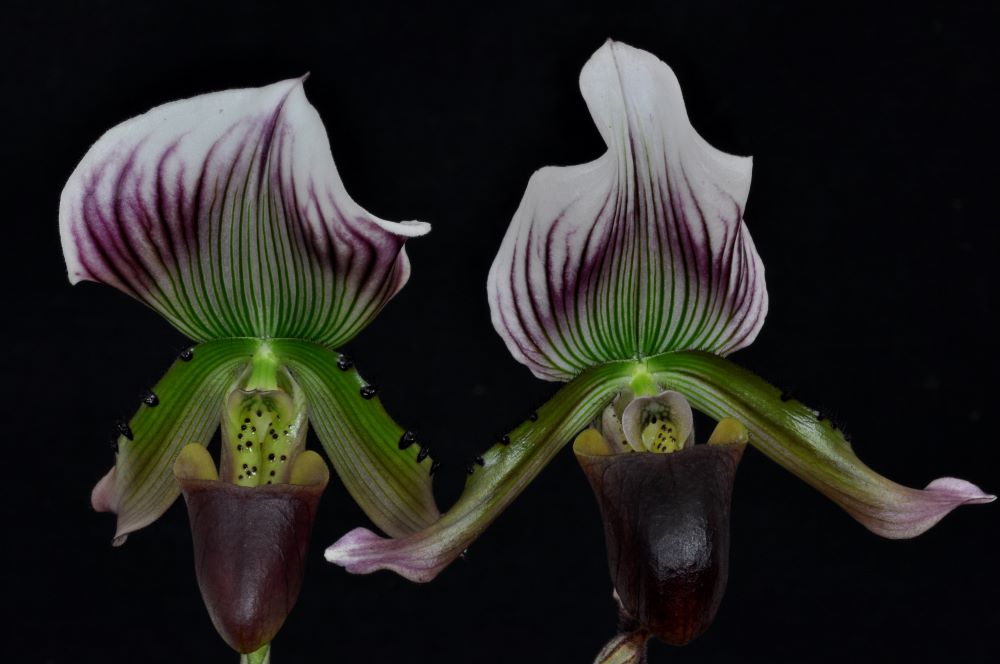
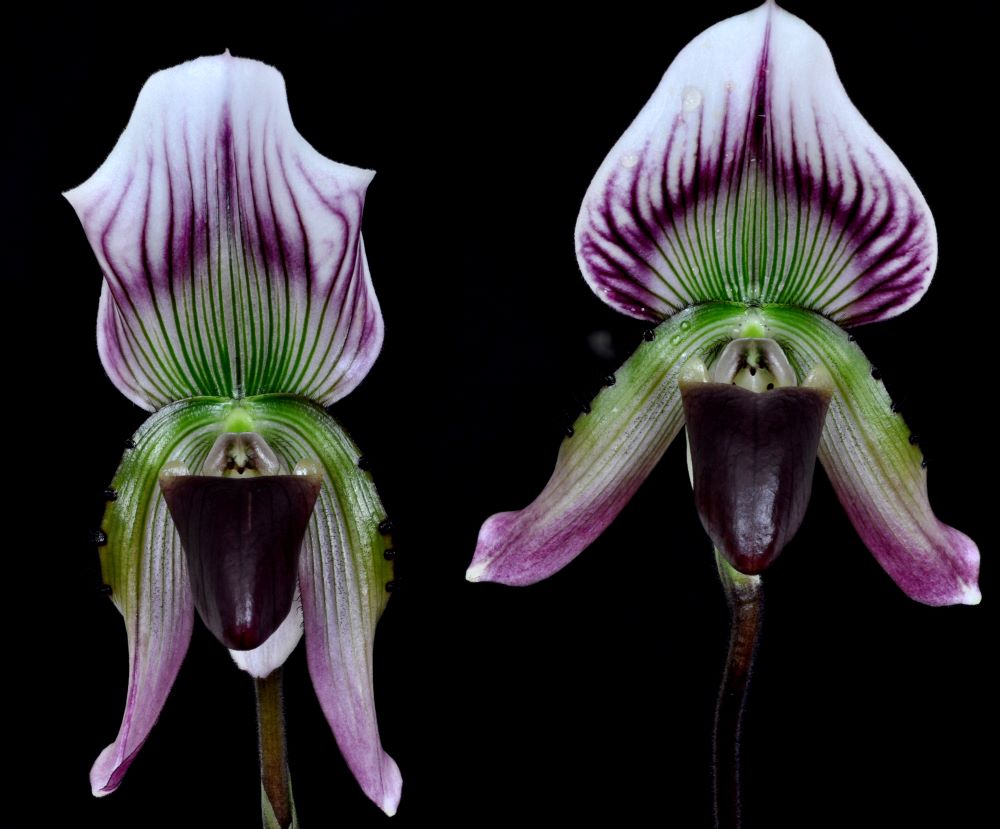
The color spectrum of the Paph. callosum was associated with the discovery of the Paph. callosum 'Jac' (Paph. viniferum - https://paphs.de/de/arten/144-viniferum) and subsequent crossings with it have been significantly expanded. From this the vinicolor variants of Paph. callosum may have arisen. Whether these results are actually still descendants of Paph. callosum is doubted by some experts.
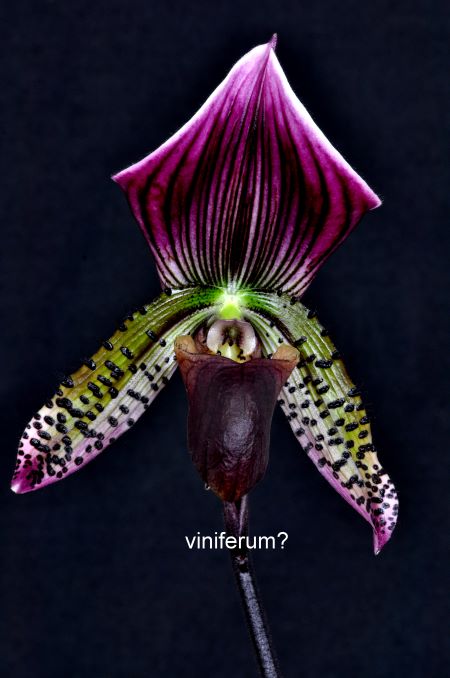
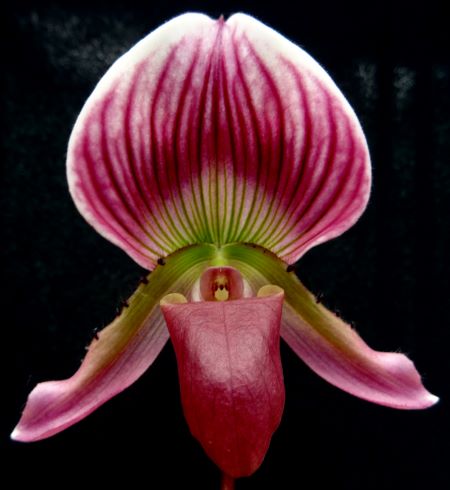
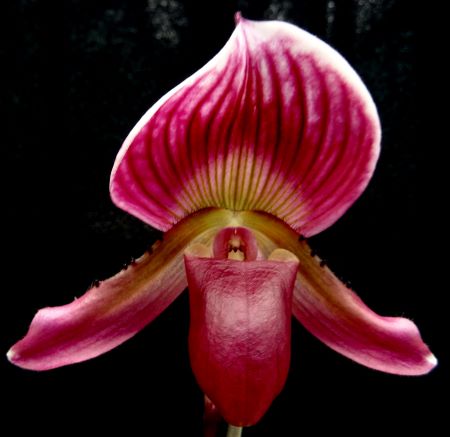
Irrespective of the taxonomist's views on whether these plants are distinct species, subspecies or local variants, it seems to me very important that the individual "species" from this complex of species are propagated purely as far as possible. Otherwise, at some point we'll only have Paph. callosum hybrids in our cultures.
Recent botanical views also suggest that plants from different locations also have a different gene pool - which should then only be propagated as a single variety. But that would also mean that we would get other names or varieties for this complex.
This idea will probably not be realized, since we only very rarely know where the individual plants were found.
More pictures from this complex you can find here:
Paph. callosum: https://paphs.de/en/species/186-callosum
Paph. barbatum: https://paphs.de/en/species/176-barbatum
Paph. sublaeve: https://paphs.de/en/species/279-sublaeve
Paph. thailandense: https://paphs.de/en/species/287-thailandense
Paph. viniferum: https://paphs.de/en/species/301-viniferum


